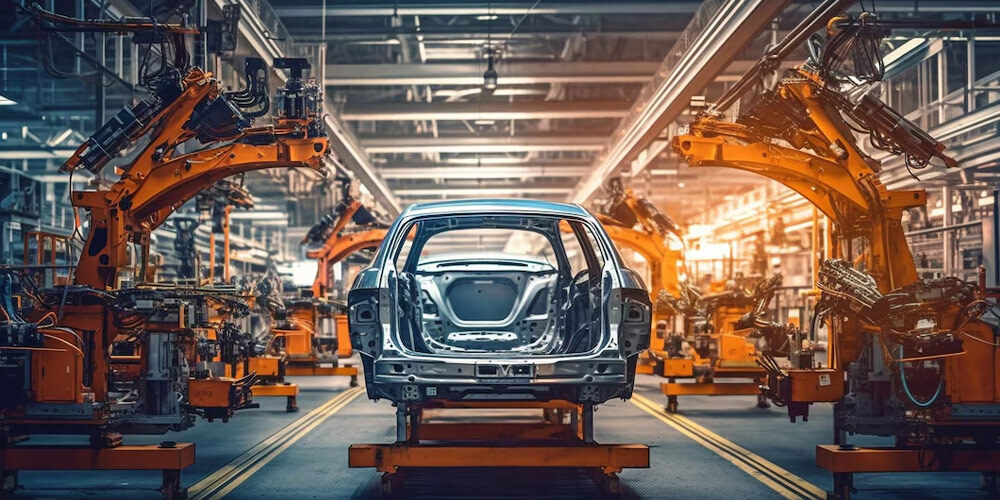Over the past 20 years, India’s manufacturing sector has changed a lot, and the casting company India Industries are one of the most active parts of it. Indian foundries are getting more and more attention for their high quality, capacity to scale up, and low cost. They make both ferrous castings (like grey iron and ductile iron) and non-ferrous castings (like aluminium, brass, and bronze). But what is behind this rise in demand for Indian casts around the world?
India’s casting ecosystem has some strategic advantages, such as
1. A lot of raw materials
India is one of the major producers of iron ore, bauxite, and other important metals. This means that casting producers can get the raw materials they need at a lower cost and have a steady supply chain.
2. A skilled workforce and technical know-how
India has a highly educated workforce since it has a solid engineering education background and decades of expertise in foundries. To improve production and cut down on flaws, a lot of casting companies have started using lean manufacturing, CAD/CAM integration, and simulation software.
3. Making things for less money
India has lower workforce costs, reduced overhead expenses, and more efficient energy use than Western markets. This makes Indian castings very appealing to OEMs, the automotive, aerospace, and industrial machinery sectors, who want quality without paying too much.
India’s Traditional Strength: Ferrous Casting
The foundry industry in India is built on ferrous castings. Ductile iron and grey iron castings are used a lot in parts for cars, farm machinery, valves, and pump housings.
Key Drivers: The automotive boom in India means that the country’s burgeoning car sector needs a lot of engine blocks, brake drums, and suspension parts.
Infrastructure Growth: The requirement for cast iron pipes, manhole covers, and construction gear has grown because of urbanisation and smart city projects.
Export Momentum: Indian ferrous casting companies are sending their goods to Europe, North America, and the Middle East, and they meet international standards like ISO, ASTM, and DIN.
Non-Ferrous Casting: New Ideas and Growing Demand
Non-ferrous castings, especially aluminium and zinc, are becoming more popular since they are light, don’t rust, and conduct heat well. These are very important for electric cars, electronics, and systems that use renewable energy.
Growth Catalysts: The EV Revolution: Aluminium castings are very important for battery housings, motor housings, and lightweight chassis parts.
Aerospace and Defence: Precision casting of non-ferrous alloys is very important for parts of planes, drones, and satellites.
Many Indian foundries are switching to low-emission furnaces, recyclable alloys, and casting procedures that use less energy.
How well exports do and how well known they are around the world
India is now one of the top five casting producers in the world, making more than 10 million tonnes of castings each year. The Engineering Export Promotion Council (EEPC) and the Institute of Indian Foundrymen (IIF) have been very important in getting Indian casting companies noticed at trade shows and expos around the world.
Main Export Markets:
- USA: Parts for cars and industrial machinery
- Germany: Castings with high precision for engineering uses
- UAE and Saudi Arabia: Castings for the oil and gas and infrastructure sectors
- Africa: castings for farming and managing water
Using Technology and Making Sure It’s Good
The casting company India today is putting money into automation, robotic moulding lines, and quality control that happens in real time. Leading foundries now all have certifications like ISO 9001, TS 16949, and AS 9100.
New Ideas in Practice: 3D Sand Printing for making complicated moulds
- Induction furnaces for melting that uses less energy
- X-ray and ultrasonic testing to find flaws
- ERP systems for making the supply chain clear
- Green Living and the Circular Economy
Being aware of the environment is changing the casting industry. More and more Indian foundries are using systems that recycle green sand, recover waste heat, and don’t let any liquid go.
- Eco-Friendly Initiatives: Using biodegradable binders in moulding
- Collecting rainwater and using solar energy
- Recycling scrap metal to use less raw materials
- Help from the government and policy push
The Indian government’s Make in India, PLI (Production Linked Incentive), and Skill India programs have helped the casting industry grow. MSMEs may grow and compete on a global scale more easily because to subsidies for technology upgrades, incentives for exports, and cluster development programs.
Conclusion: India’s Future in Casting Is Built on Quality
India’s rise as a global centre for ferrous and non-ferrous castings is no accident. It happened because of smart investments, skilled workers, and a constant focus on quality and new ideas. India has a great value offering for global buyers, OEMs, and industrial partners: world-class castings at reasonable pricing, with a focus on sustainability and scalability. Casting company India is not only keeping up with the trend towards lightweight materials, ecological manufacturing, and digital supply chains; they are also setting the benchmark.



